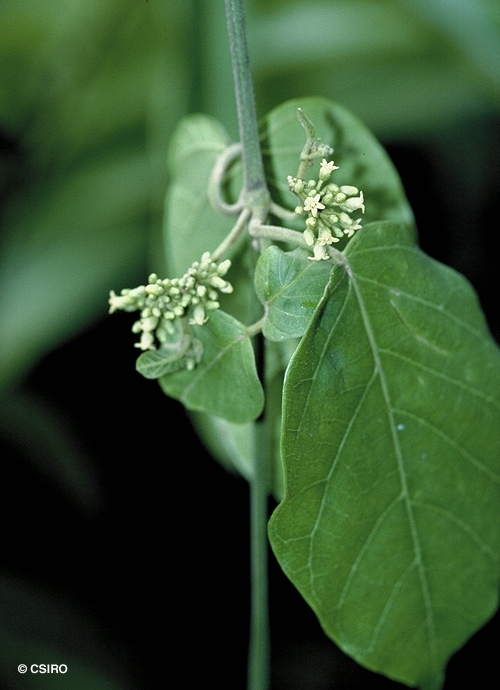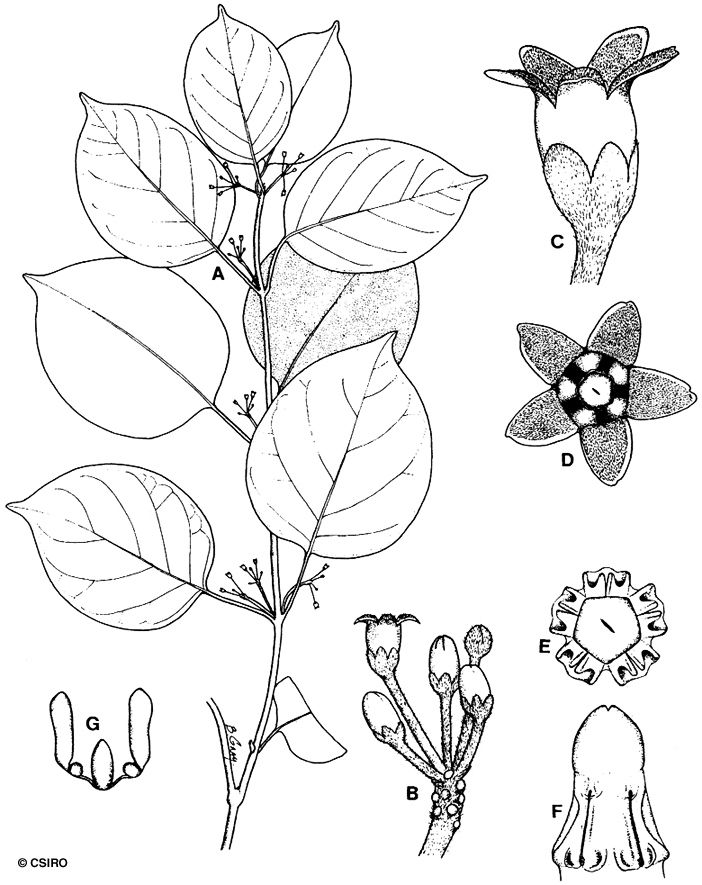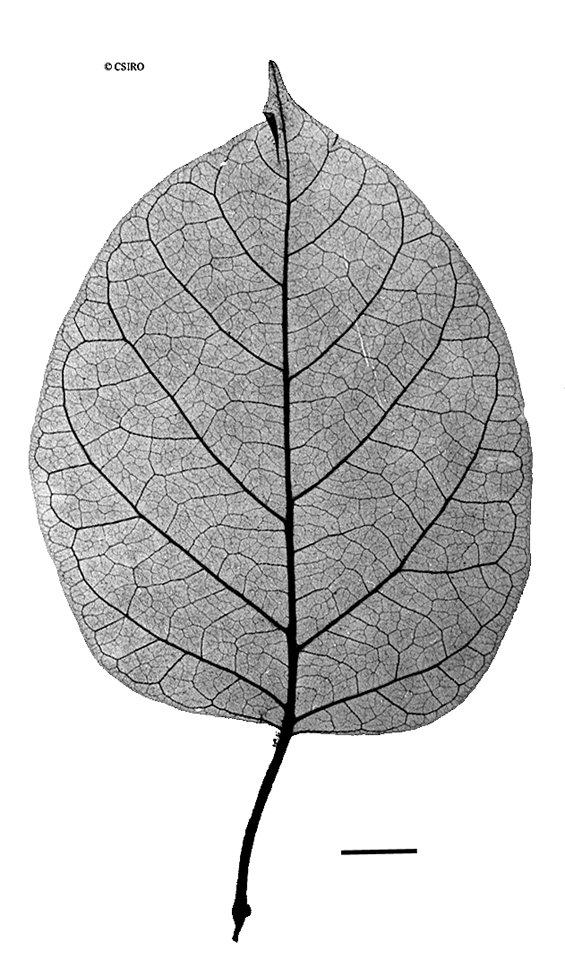Australian Tropical Rainforest Plants - Online edition
Marsdenia longipedicellata P.I.Forst.







Forster, P.I. (1995) Australian Systematic Botany 8(5): 814. Type: Queensland, State Forest Reserve 310 Gadgarra, Goldsborough Logging Area (17 13S, 145 45E), B. Hyland 14662, 2 Mar. 1993; holo: QRS; iso: BRI.
Vine stem diameters to 10 cm recorded. Bark exudate rapid and copious.
Twigs and petioles produce a milky exudate. Exudate from the pith of twigs is yellow. Leaf blades about 7.5-15 x 4-10 cm, hairy on both the upper and lower surfaces, petioles about 1.5-4 cm long, hairy. Lateral veins about 6-8 on each side of the midrib, vein angle about 80-90 degrees. Several (6-8) colleters (small finger-like glands) visible on the upper surface of the midrib at its junction with the petiole. Similar peg-shaped glands usually present in the leaf axils. Domatia are foveoles.
Two inflorescences produced from one leaf axil of a pair of leaves. Flowers cream to green, about 4-5 mm diam. on pedicels about 4-6 mm long. Calyx lobes about 2-2.5 mm long. Corolla tube about 2 mm long, lobes about 1-2 mm long. Corona consists of 5 raised ridges on the inner surface of the corolla tube. Stamens fused together to form a bullet-shaped structure about 1.8 mm long in the centre of the flower. Carpels elongated. Ovules numerous in each carpel.
Fruits about 50-65 x 8-9 mm, tapering to a fine point at the apex. Seeds about 12-13 x 5-6 mm, plumes of hairs about 25 mm long. Embryo about 8-9 mm long. Cotyledons narrowly obovate.
Features not available.





